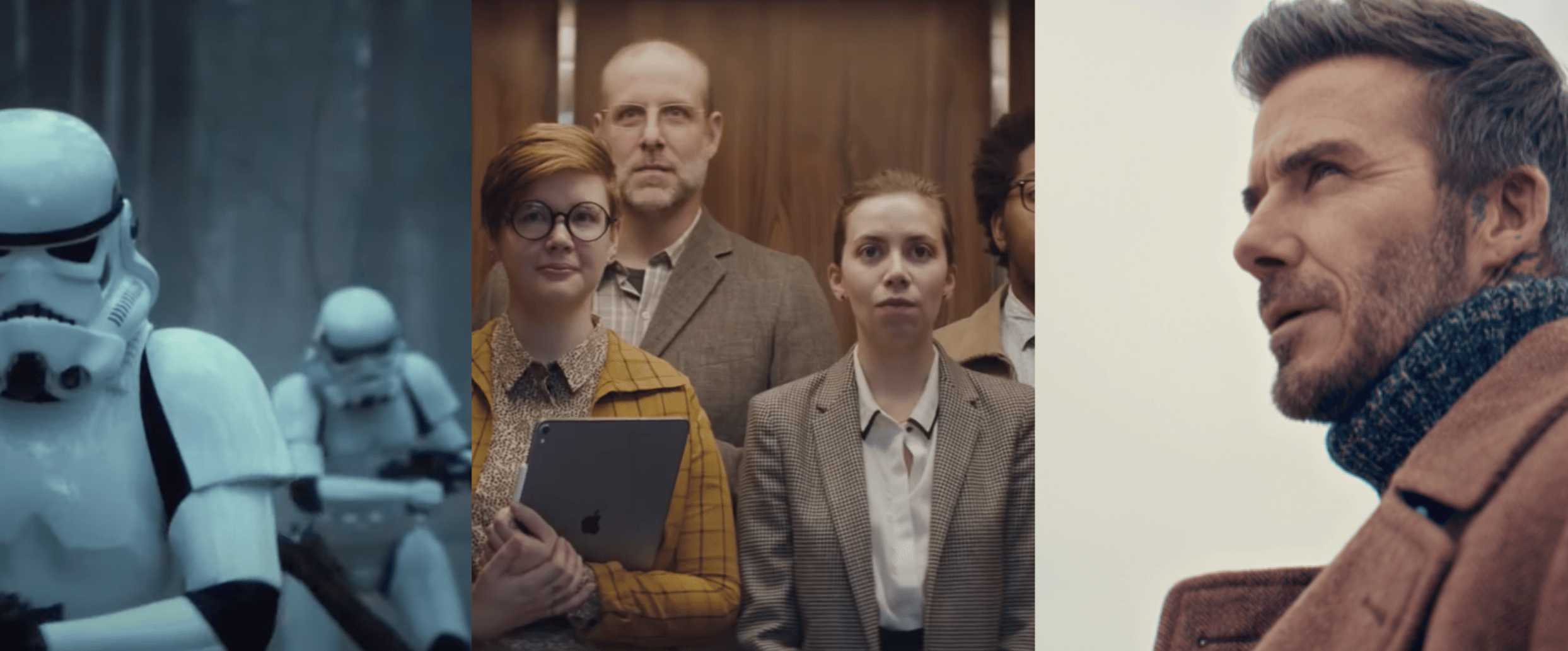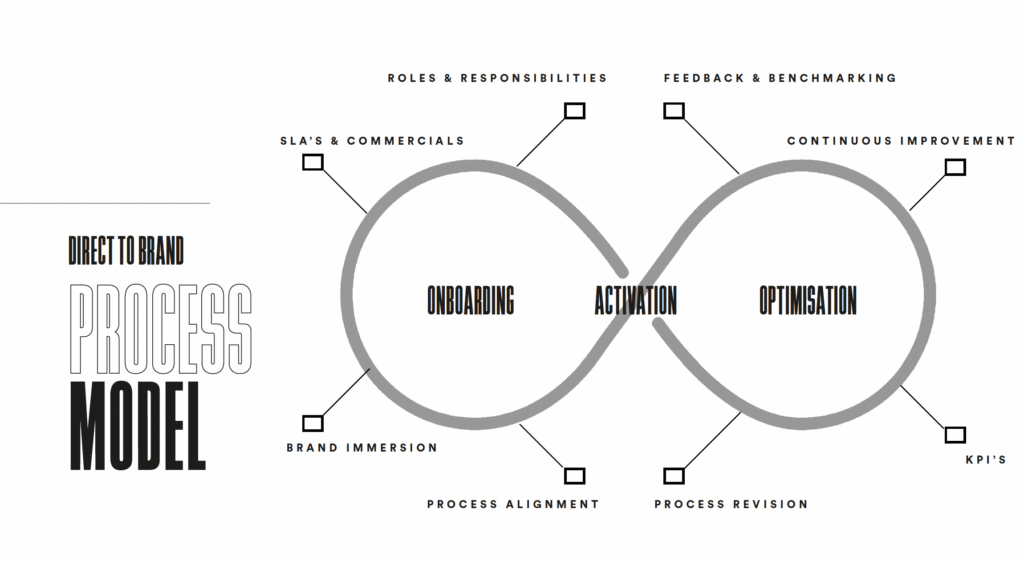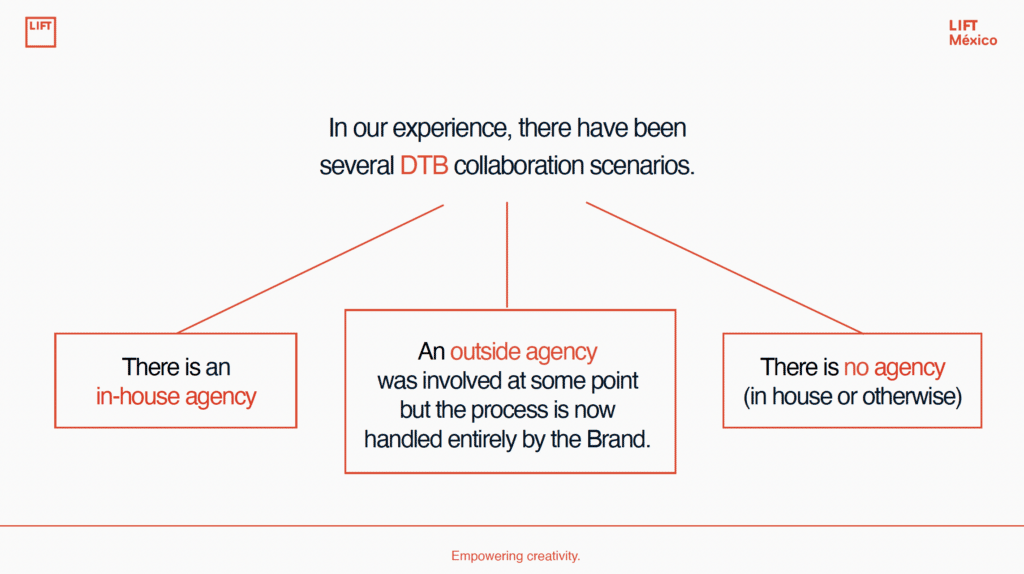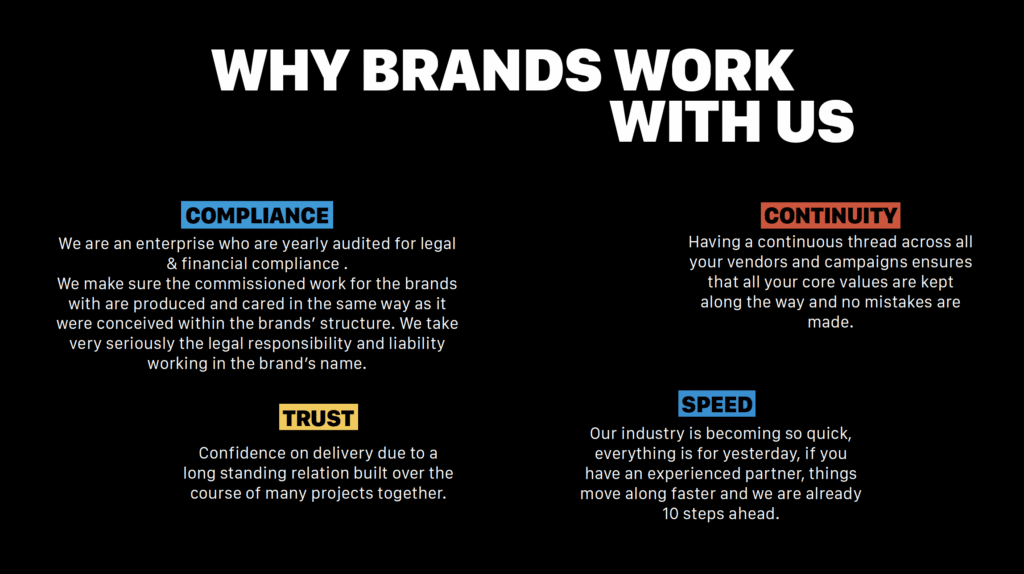Making In-House Agency-Production Company relationships work

Keen to embrace emerging new opportunities for working with In-House Agencies and direct with brands, production companies have been adapting their offerings, skills and processes. In our latest IHALC online session, we heard from three production services companies who are part of the JW Collective, our partner for the session.
On the call were Karen André of LS Productions, José Teran of The Lift in Mexico and Ivo Van Vollenhoven of 24/7, which, along with its associates at Radioaktive and Division, operates across Europe and in Chile. Between them, the three have a wealth of experience of shooting ‘direct-to-brand’, including for the likes of Apple, Cristiano Ronaldo, Adidas and Valentino.

LS’s Direct-to-Brand Process model
LS Productions for Valentino
Flexibility
Just as there is no one IHA model that fits all businesses, so there are different ways in which production companies engage directly with brands. José identified three: projects where there is an IHA, projects where an external agency was involved at some point but the process is now entirely handled by the brand, and projects where there is no agency at all (in-house or otherwise), in which case the relationship is with a CMO or Head of Brand.
These different models require production companies to be very flexible in terms of what they offer, broadening their skills to include creative and account management.
“Whilst it’s great to work directly with brands, the flip side of that is that sometimes some of the core roles that we’re used to operating with are missing, which can lead to grey areas in the process which nobody likes,” Karen commented.
Having a single point of contact who can liaise with the production company helps: “Just making sure that within your in-house agency there is somebody – a production manager or somebody who ‘speaks production’ – who can make sure that the liaison between production company and in-house agency is really tight. Because when that’s not tight, that’s when mistakes happen,” Karen added.
A rigorous onboarding phase, which clarifies roles and responsibilities, agreed SLAs and processes are also vital.

https://youtu.be/G9TdA8d5aaU
Apple The Underdogs, produced by The Lift
Trust
José said he believed the best Direct-to-Brand work came when production companies were part of a roster of partners, allowing time for trust and knowledge to build on both sides. The production company, he said, “has to be more than ‘the end of the line’ – it has to understand the brand and how it works”, getting involved upstream as much as possible.
Longer-term relationships, added Ivo, also result in continuity and transfer of knowledge: “Company values can be passed on from one vendor to another, so that no mistakes are made. And that translates into trust and confidence on delivery, due to that long-standing relationship. Having done many projects together also means you can make things very fast. If we have to deliver in a week, we already know the process, we’ve worked with you before and, even if a new vendor comes on board with us, we can guide them through it and make it as fast and then as secure as possible, and have a fantastic delivery on time.”
Ivo Van Vollenhoven explains why brands work with 24/7
24/7 and Radioaktive for LEGO
Learning
Production companies can provide valuable learning and feedback based on their experience of multiple shoots with brands. LS, for example, is Cristiano Ronaldo’s regular content partner – and their studio base in Manchester is the perfect base for him to do all his local shoots.
“We’ve created a playbook for any agency or brand that works with him, so that they can benefit from our experience and best practice,” Karen explained. “So every shoot he has on set with us is consistent, it’s enjoyable for him, and for the team around him. And that’s a bespoke model that we can create for clients when we’re working direct. If we know that we’re going to have a longer-term partnership, we can afford to invest in doing these extra services, so that you’re looking after your client really well.”
Ivo does something similar for his regular work with Lionel Messi, as well as providing feedback sessions for clients: “We do meetings with all our producers to talk through how the job went with every client, we make sure that everyone knows if there’s anything that could have gone better, or something went really well. We really make sure that’s translated internally. And then when we are on the next job, we make sure that if we’re working with someone who’s not so familiar with the brand, that we really translate that information to them, and we really make sure that they know what we’ve learned from working with that client.”
LS also provides post-shoot feedback and content for clients: “We call it the ‘story of the shoot’,” Karen said. “We present it back to the agency as a one-page summary of the shoot’s key learnings. And we’ll do a behind the scenes, a nice little creative piece where we package it up together so the agency can take it to their wider organisation and say, ‘look, this is what we’ve developed’. And we can give them extra assets to use in their internal channels (to tell the story of the production).”
The importance of the in-house Creative Director
“It’s fairly dependent on how big your in-house agency is and how big the team is, but I think it’s a crucial role,” Karen said. “The role of a creative director to elevate everybody in the team is key. It’s also about the decisions that have to be made – when there’s not one clear person who’s the steward of the brand, controlling those decisions, it can be difficult. I think it’s a really important role to have internally if you possibly can.”
“I think we all always need to have a creative figure in the process,” agreed José. “That could be the director, but sometimes directors have a limit time-wise. So if there’s not a creative director on the agency or the client side, we maybe have to think about bringing one in.”
And the best thing about working Direct-to-Brand?
Karen: “For me, it’s probably feeling much more closely connected to the creative and being able to influence decisions earlier in the process. So that would definitely be the highlight for me. Payment terms are always tricky, but the flip side of that is that, because it’s a recurring relationship, it’s much easier for us as businesses to forecast that income. And it’s much less precarious than some of our other income streams.”
For José, “I think the best thing is, if you’re already in the point where you trust each other, those experiences always end well. Even the ones that don’t end as well as you’d hoped, if there is trust, it’s very easy to point to where things didn’t go as well as expected, and be able to fix that. So communication is very important. It’s just having the chance to establish a trusting relationship that benefits the work.”
If you didn’t make it along to the session live, a recording is available to download here
You can also view a selection of direct-to-brand films from our panellists here

